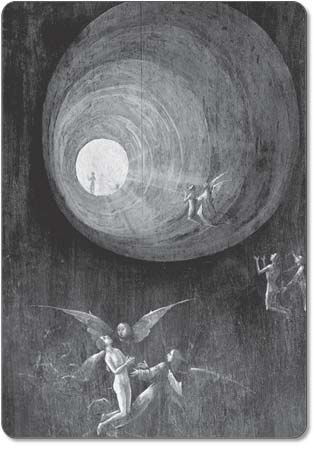Did she see the light?
 Near-death experiences, phenomena that cross national, gender, age and religious lines, are a subject of great fascination to many here and around the world. The Amazon.com website has 15,908 possible links for books, starting with the "Big Book of Near-Death Experiences." Little wonder if, as the International Association for Near-Death Studies (IANDS) says on its website, studies in the United States, Australia and Germany appear to suggest four to fifteen percent of the general population has had an NDE.
Near-death experiences, phenomena that cross national, gender, age and religious lines, are a subject of great fascination to many here and around the world. The Amazon.com website has 15,908 possible links for books, starting with the "Big Book of Near-Death Experiences." Little wonder if, as the International Association for Near-Death Studies (IANDS) says on its website, studies in the United States, Australia and Germany appear to suggest four to fifteen percent of the general population has had an NDE.
In the webpages on "key facts" about NDE's an IANDS writer comments:
Whether happening “truly near death' or under benign circumstances, the near-death experience contains powerful images and emotions, usually of peace and love though sometimes terror, despair, guilt. An NDE may include an out-of-body experience and vivid perceptions of movement, light, darkness; encounters with deceased loved ones, unfamiliar entities and/or spiritual presences; sometimes a life review, a landscape, a sense of overpowering knowledge and purpose. The aftereffects of an NDE or related experience are enduring, often powerful, and may be life-altering.
The NDE belongs to a larger family of experiences that go beyond the usual limits of space and time and can transform a person's life and beliefs. They may be called spiritually transformative, conversion, mystical, religious, or transpersonal experiences.
(Italics mine)
As hard as scientists are working to reduce them to a series of logical phenomena, those reporting on near-death experiences seem to have a responsibility to allow for voices that provide religious explanations. What else can one ask of a spiritual experience than that it include spiritual beings, some kind of judgement about one's life, divine/spiritual beings, and perhaps meeting loved ones who have gone?
But one of the logical fallacies of our day is scientism -- the belief that a scientific explanation trumps all other ones. And reporters, given that they depend so heavily on "facts," are prone to rely on the scientific hypotheses, without providing readers alternate view. In a phenomena which clearly has psychological and spiritual facets, that kind of journalism seems inadequate at best and biased at worst.
One example: a recent story submitted by a reader from the CNN.com website. "Doctor says near-death experiences are in the mind" the headline tells readers. But instead of providing alternative perspectives, the story, by CNN Senior Medical Producer Saundra Young, focuses on the medical and scientific angles, with only the voices of the survivor and a lone doctor providing contrast.
Young leads off with the story of NDE-survivor Laura Geraghty, a school bus driver in suburban Boston. So what exactly happened to her? Dr. Kevin Nelson, a neurologist, has an explanation: it's all in Geraghty's head.
"These are real experiences. And they're experiences that happen at a time of medical crisis and danger," Nelson said.
Humans have a lot of reflexes that help keep us alive, part of the "fight or flight" response that arises when we're confronted with danger.
Nelson thinks that near-death experiences are part of the dream mechanism and that the person having the experience is in a REM, or "rapid eye movement," state.
"Part of our 'fight or flight' reflexes to keep us alive includes the switch into the REM state of consciousness," he said.
During REM sleep, there is increased brain activity and visual stimulation. Intense dreaming occurs as a result.
And the bright light so many people claim to see?
"The activation of the visual system caused by REM is causing the bright lights," Nelson said.
And really, that's the only explanation offered. What can Geraghty say to refute what is so clearly obvious? Clearly, the only one who can dispute another doctor is a doctor -- and happpily Saunders quotes Dr. Bill O'Callahan, the ER doctor who helped bring Geraghty back to life.
This is tricky territory. Since NDE's don't appear to happen to particular faith groups, it's hard for spiritual leaders to either claim or dispute them. Because we don't know what they mean, do we? And yet there are probably many theologians, and certainly many New Age practitioners, who could add another facet to the dialogue.
Given the writer's perspective, the ending of this article really doesn't surprise me.
Geraghty says she became depressed once she left the hospital because her perspective on her entire life changed. She still gets depressed, she says, and is on medication.
"I actually went to my doctor and said to her, 'I think I'm losing my mind. This can't be really happening,' you know, and she said it's OK, it's very hard to understand when you've been through an experience like that."
Geraghty has joined the cardiac arrest group, hoping that connecting with others who understand what she's been through will allow her to come to terms with what happened to her that cool spring day six months ago. And allow her to heal and move on.
Of course she needs to "heal and move on" -- because, after all, there is no other alternative. Or if there is, we don't hear about it. In an age in which everything will eventually be explained, science rules.